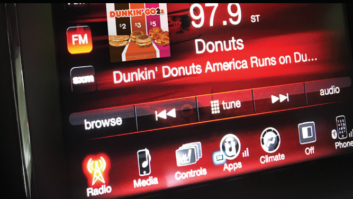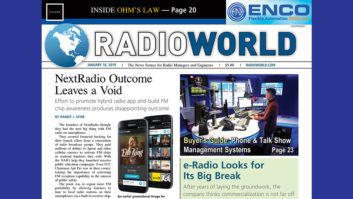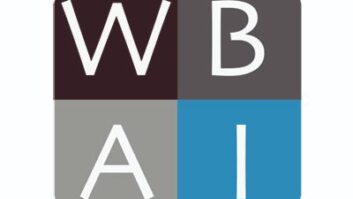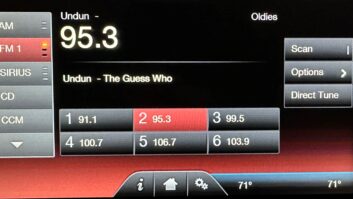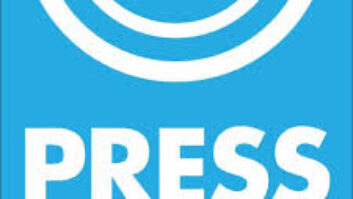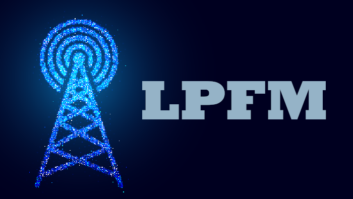
The founders of NextRadio thought they had the next big thing with FM radio on smartphones.
They secured financial backing for their launch effort from a consortium of radio broadcast groups. They paid millions of dollars to Sprint and other cellular carriers to activate FM chips in Android handsets they sold. With the NAB’s help they launched massive public education campaigns. Even FCC Chairman Ajit Pai was in their corner touting the importance of activating FM reception capability in the interest of public safety.
The point was to regain more FM portability by allowing listeners to tune to local radio stations on their smartphones via a built-in receiver chip, while giving broadcasters the benefits of consumption information, as well as a return data path.
[FCC Chairman Calls on Apple to Turn on FM Reception in iPhones]
However, in the end it seems NextRadio lost its juice. As the New Year dawned, it had laid off most of its employees and was drawing down operations dramatically.
BIG AMBITIONS
The reasons for its demise are still being discussed around the industry. Maybe it was the fact that NextRadio developers were unsuccessful at convincing Apple to activate the hybrid radio app on iPhones? Or perhaps it was a lack of interest by the general public who load up their smartphones with more appealing apps and entertainment options? Or the simple fact that money to fund the project simply ran out.
NextRadio, launched in 2013, was developed by TagStation LLC and owned by Emmis. TagStation is a cloud-based software platform that allows stations to manage album art, metadata and enhanced advertising on various devices.
[Emmis Communications has been in the selling mood]
At the time, in an effort to kick start NextRadio’s foothold in the marketplace, a consortium that included Emmis, iHeartMedia, Beasley, Urban One Inc. (formerly Radio One), Hubbard Radio, Townsquare Media, Bonneville, Entercom Communications and others agreed to pay Sprint $15 million per year over a three-year period in return for the wireless provider activating the FM tuners in a minimum of 30 million FM-enabled wireless devices.
In all it appears Sprint was paid at least $39.2 million total for the app activations, according to Emmis government filings. Emmis ended the practice of paying cell carriers to activate the chip in smartphones in 2016, and instead adopted a revenue sharing formula with wireless providers.
The long-term hope was that the radio industry could eventually monetize the NextRadio app, in part through data attribution. They hoped it would provide advertisers with robust analytics and more insights about radio ROI.
The long-term hope was that the radio industry could eventually monetize the NextRadio app, in part through data attribution.
The introduction of the Dial Report by TagStation in early 2017 was a milestone in those efforts, but that was about the time funding from the radio industry began drying up, according to Emmis filings to the U.S. Securities and Exchange Commission.
Data attribution was what would make the platform successful, said Emmis CEO Jeff Smulyan, but it needed money and buy-in from the rest of the radio industry to make that happen.
By October 2018, Smulyan, who had toiled both hard and publicly to promote the initiative, made it clear that Emmis was “unwilling and unable” to continue funding the NextRadio and TagStation businesses on its own. Soon after, it terminated 35 employees of NextRadio and TagStation. The Indianapolis Star newspaper pegged the total number of employees between the businesses’ operations in Indianapolis and Chicago at 40 before the job cuts.
[TagStation Builds a Radio Attribution Ecosystem]
Emmis disclosed in its recent financial filings that operating losses from its related NextRadio businesses totaled $7.6 million over the 12 months ending Aug. 31.
SCALEBACK
The cuts in personnel and services resulted in a dramatic reduction in scope and scale of business operations. For now TagStation will only support free logo services to NextRadio and certain other distribution points.
“Station-specific content such as album art, on-air related images and other metadata that were previously used for PAD [Program-Associated Data]-related broadcasting will no longer be available through TagStation cloud services,” the company wrote in an email to station clients. “We will provide certain product support and maintenance for the foreseeable future.”
A TagStation representative told Radio World that “just under 4,000 HD radio stations lost album art and other metadata — news, talk, jock and promotional images — for HD Radio Artist Experience, certain connected cars, websites, NextRadio, third-party apps and Now Playing.”
In addition, approximately 15,000 radio stations, including FM/AM/HD and translators in the U.S., are online for simple logo and station metadata services being sent to NextRadio and certain connected cars, the company official said.

An Emmis spokesperson told Radio World that NextRadio President Paul Brenner remains with the company. Brenner, who has been with Emmis since 1998, declined to comment for this article.
Emmis tried to drum up additional investment in NextRadio the past two years by giving other eligible radio broadcasters several “call options” to acquire all or part of NextRadio, according to paperwork filed with the SEC. The next call option that could have been exercised by eligible radio broadcasters is in August 2019. Following recent developments it’s unlikely that will happen, observers said.
Smulyan’s failure to build the consortium large enough to support NextRadio for the long term was its ultimate failure
Smulyan’s failure to build the consortium large enough to support NextRadio for the long term was its ultimate failure, insiders say. It didn’t help that two of the largest U.S. radio broadcast groups, iHeartMedia and Cumulus, have been through bankruptcy proceedings.
CHIP DISAPPOINTMENT
The industry vibe about the fall of NextRadio appears to be mixed, according to observers. It can be read as a blow for hopes that the wireless industry will adopt local radio reception more directly into future device designs. Others are more hopeful.
“It’s unfortunate to see the momentum made on NextRadio and TagStation halted. We continue to believe in the technology, and are confident there will be other companies that step forward to take up the mantle,” said Dennis Wharton, executive VP for communications at NAB.
NAB had helped fund NextRadio’s initial development. The group’s biggest disappointment was Apple’s refusal to activate FM chips in iPhones, Wharton said, who confirmed NAB did supply a “significant amount of financial support for NextRadio” but declined to give a specific dollar amount.
Bob Pittman, iHeartMedia chairman and CEO, told Radio World in a prepared statement: “Although NextRadio may not have lived up to the high expectations we all had, it was a great success in getting the industry to begin thinking seriously about other devices besides just the traditional AM/FM radio. And for that we can thank Jeff Smulyan, who has always been a media innovator.”
Rick Ducey, managing director for BIA Advisory Services, said NextRadio had some big hurdles to overcome, though he was glad to see the radio industry showing it has an appetite for innovation.
“In the end, mobile carriers did not see a business case for activating FM chips in those phones so equipped,” Ducey said. “There was some operational complexity and limited risk-adjusted returns to support a FM chip strategy versus distributing content over streaming platforms. The handset manufacturers were reluctant to put more FM chips into their devices without carrier demand. And finally radio audiences did not see the benefits of NextRadio to the point of encouraging mass adoption.”
“In the end, mobile carriers did not see a business case for activating FM chips in those phones so equipped.” — Rick Ducey
There were skeptics of NextRadio who questioned whether the hybrid phone app could be the industry’s savior and reverse dropping listener levels. Some quietly doubted that the radio industry as a whole, beyond Emmis, was fully supportive when many large radio groups have their own individual listening apps and streams to promote.
“I think a focus for radio right now is on balance sheets, revenue growth, margin compression and increasing marketplace competition for listener hours and advertiser dollars,” Ducey said. “When the goal is to get to listeners wherever they are and on whatever device, the ready-made environment supporting streaming audio offers is a lot easier to adopt then building a new infrastructure.”
Mark Ramsey, media strategist and researcher, said NextRadio was “conceived as an industry-centric solution to an industry problem, not a consumer-centric solution to a consumer problem. That is always a recipe for disaster.”
He continued, “All tech innovations are risky and failure is simply the cost of a lesson learned. This shows that quality content is the most important factor in radio’s success. The greatest concern for the radio industry should be that passion for radio is sinking among younger listeners especially. To the degree that radio exits the content business to focus on distribution, economy, scale, consolidation, etc., it will continue to lose its way.”

LOSS OF SERVICE
The technical implications facing radio stations that participated in TagStation is still sorting itself out. A customer notification from TagStation in an email to radio stations in late December signaled the beginning of its plan to reduce the scope and scale of its operations: “From now on TagStation will only support free logo services. Station specific content such as album art, on-air related images and other metadata that were previously used for PAD related broadcasting will no longer be available through TagStation cloud services.”
[TagStation Builds a Radio Attribution Ecosystem]
Broadcasters who used the TagStation service do have replacement options for their album-art and on-air image needs. Jump2Go and Quu Interactive supply similar metadata services, according to several broadcast technical experts contacted for this story.
“Beasley was aware of a possible loss of the service so we already had a solution using Jump2Go and Quu Interactive,” said Mike Cooney, chief technology officer and VP of engineering for Beasley Media Group. “We were only without images for a day or two. Most of the impact of losing [TagStation] was on HD stations and subchannels.”
The TagStation logo service, which will continue for now, will be a good “interim solution” for other smaller broadcasters, Cooney said.
Jeff Littlejohn, executive VP of engineering and systems at iHeartMedia, said the broadcaster only uses TagStation to feed the NextRadio application, so “very little impact is expected” on iHeart stations.
Cumulus Media announced in 2017 that all of its stations, including subsidiary Westwood One, had signed on for the TagStation service. An engineering official with Cumulus said the company was reviewing options to replace TagStation and testing different services in few markets.
“It’s nice to see the logo versus nothing, but we do want to offer ‘full service’ to our HD listeners. Cumulus Media is striving to put the best product out there, whether it’s analog, HD, streaming, apps, etc.,” said Randy Norris, regional director of engineering for Cumulus.
Norris said only the broadcaster’s HD/HD2/HD3 stations were affected by the loss of TagStation.
There doesn’t appear to be much left of NextRadio and TagStation at this point, according to observers. In early January, the NextRadio website remained active but told visitors that the app had been removed from iTunes and that NextRadio would no longer provide support for live radio streams.
The businesses detailed cuts in personnel and services in a press release in mid-December: “After exploring several alternatives, we have made the difficult decision to dramatically reduce the scope and scale of our operations, which includes the termination of 35 employees of these businesses. NextRadio and TagStation employees that were separated were given generous severance packages.”
There was no mention of the status of Dial Report in any of TagStation’s press announcements and what would become of the audience measurement tool.





